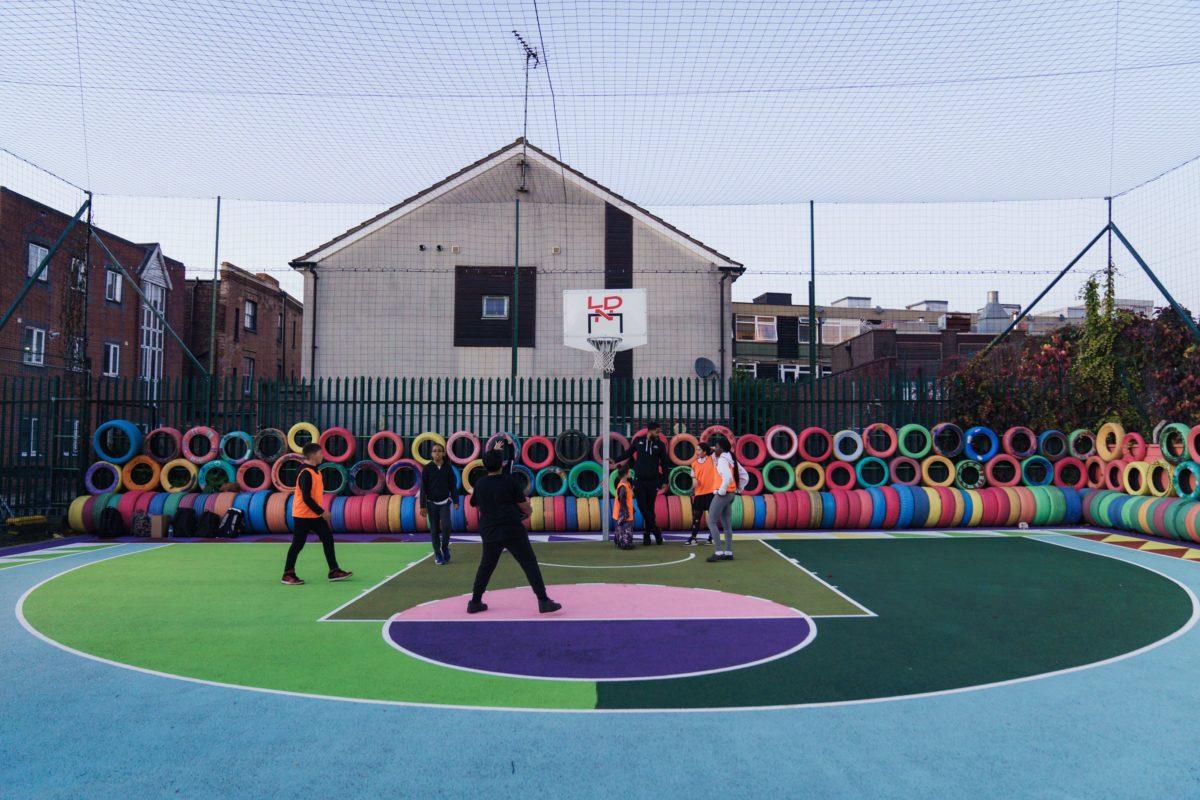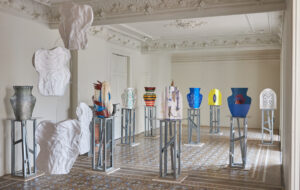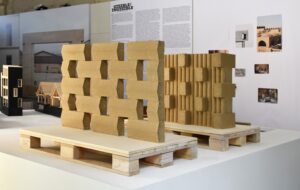Art and basketball combine to help East London borough with highest child poverty rate

Words by Harriet Thorpe
In East London, a community basketball court has been revived with a renovation and colourful painting by artist Alvaro Barrington. The court, which is operated by charity Weavers Adventure Playground in Bethnal Green is attended by 70 to 150 children each day, and located in the London Borough of Tower Hamlets, the London borough with the highest child poverty rate according to research from The Trust For London.
While the new design is colourful and upbeat, it responds to some serious issues of urbanism and representation flagged by the London Lions Basketball Club, a professional basketball team based at the Copperbox Arena in Stratford. The collaborative project was initiated in response to their in-house research study titled ‘People Like Me’, which examines ‘systemic failures which have impacted ethnic minorities’. Of those surveyed, 73 per cent agreed that cities are not prioritising space for children to play, a statistic that alarmed the team, which has a core mission to support young people.

The gift of the renovated court from partners London Lions, the Serpentine gallery, concept studio CONSUL and Tower Hamlets Council, was welcomed with open arms by the Weavers Adventure Playground, which admitted to struggling financially with cuts to funding.
As part of its research, the London Lions discovered that even though an estimated 1.3 million people regularly play basketball in the UK (with the highest percentage of players with a non-white British background than any other sport at 47 percent), the sport still ranks 12th for grassroots funding over the last decade. According to UK Sport, between 2018 and 2021 British Rowing received £10m per annum, while Basketball received just £25,000 per annum.
Described by the Serpentine gallery as a ‘public artwork with civic purpose’, the basketball court is a patchwork of colourful shapes and references inspired by pop artist Bridget Riley, Gee’s Bend, quilt artist Annie May Young and Annie Bendolph and video artist Arthur Jafa.
Artist Barrington designed the court as a map that represents ‘both migration and athleticism’. In his design, court markings become borders; graphic signifiers of landscape – the rising and setting sun, mountains, valleys and oceans. Tyres and chains surround the court as a sculptural and durable layer to the design referencing ideas of mobility and migration.

Growing up in New York, artist Barrington was greatly inspired by the cultural history of basketball and has experienced the positive impact of sport first-hand in the city; where street courts like Rutger Park and Coney Island were fertile ground for some of the sport’s most important players like Michael Jordan.
The London Lions survey also highlighted this, with 46 per cent saying that a free space to play sport or do physical activity is their most important mental health aid, and 16 per cent saying that without these outlets whilst growing up, they would have engaged in anti-social behaviour or crime.
With this new court, which comes with six weeks of coaching sessions, creative tournaments and open play sessions led by the London Lions, the ambitious team is hoping to turn some of these statistics around. And for the London Lions, it’s just the first of many renovated courts to come.
‘It’s vital for children to have a safe space to play and engage in physical activity, and we hope that this new court provides just that. We see first-hand the positive difference that sport can have on people’s lives, and it’s now about maximising this impact in the areas across London that need it most,’ says Lenz Balan, Vice President of 777 Partners who own the London Lions.
Photography courtesy of Weavers Adventure Playground
Get a curated collection of design and architecture news in your inbox by signing up to our ICON Weekly newsletter
















